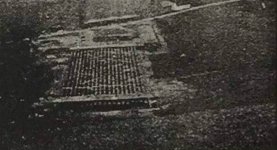Stephan98k
aka 8x57IS
Very interesting, I wonder if the proof house itself was used for the acceptance or just within the town, I would have to assume it was. I have another document mentioning the final test firing of military rifles sent to Suhl when a permanent firing range was not yet available, I assume the same scenario existed there.
You know my English language skills are a disaster and I don't understand your first sentence, please explain it again.
As an example: K98k bcd4 "x" block got assembled at Sauer & Sohn in Suhl and then the Heeresabnahmestelle Suhl, headed by Major von Kalckstein, carries out the Beschuss (firing proof) and Anschuss (sighting-in).
If the K98k has met the requirements of the shooting conditions and the shooting results are average, then this carbine will be issued to the troops as K98k.
If the shooting results were above average and it met the requirements, this K98k was set aside and sent to Hermann Weihrauch in Zella-Mehlis.
Hermann Weihrauch built the components and then mounted the scope on the K98k.
Hermann Weihrauch's sighting-in shooter Mr. Möller drive to the Heeresabnahmestelle Zella-Mehlis, headed by Oberinspektor Loesch and carries out the Anschuss (sighting-in).
The Heeresabnahmestelle Suhl and Heeresabnahmestelle Zella-Mehlis was not far from each other, you could walk the distance in 1.5 hours. If one of these places was overloaded, they could switch to the other one. In addition there were extreme precision problems and the poorly shooting scoped carbines were a burden for the Heeresabnahmestellen.
There were also other external influences like bombing raids and in this case I can cite Steyr as an example. After the Americans visited Steyr in February 1944, the weapon assembly was moved to Molln and there was a big problem, the shooting range had not yet been built. By March, Steyr in Molln had already delivered around 3,000 K98k, 2,000 MP40, and 900 MG42. Since the firing range did not yet exist at that time, the weapons were sent to Heeresabnahmestelle Suhl and to a Heeresabnahmestelle in Berlin (company Maget) for acceptance.
Which document do you mean in your last sentence?

